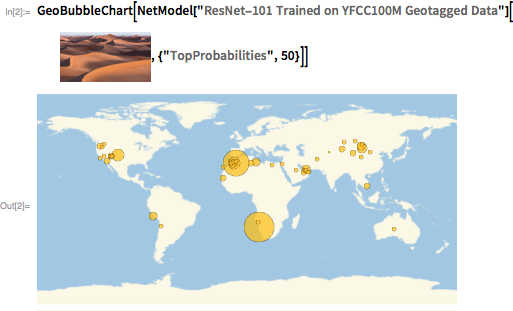| Wolfram 11.2 Improves Image Processing |
| Written by Kay Ewbank | |||
| Monday, 25 September 2017 | |||
|
The latest version of Mathematica and the Wolfram language have been released. Version 11.2 improves the options for audio and image processing, as well as adding more functions for mathematical computation, task handling and machine learning.
The Wolfram language was made available for writing code as a separate entity alongside the previous version of Mathematica. It couples the Mathematica engine to automate symbolic processing in ways that are quite powerful, though most of the power comes from the Mathematica engine. This is an intermediate release, so the changes reflect improvements from the company's R&D pipeline. Writing about the new release on his blog, Stephen Wolfram said the improvements range: "from ones that provide finishing touches to existing major frameworks, to ones that are first hints of major frameworks under construction." Some of the improvements add to the machine learning options. Specific machine learning functions - Classify and Predict - were introduced In 2014. Image identification was added in 2015, and a symbolic neural net computation system was dded last year. The aim, according to Stephen Wolfram, is to make machine learning accessible by non-experts. This release strengthens the capabilities of Classify and Predict. Both rely on you providing training data from which they learn to identify machine-learning classifiers or predictors. What makes this work well is finding the best features to extract from the data. The new vrsions of Classify and Predict have a variety of new kinds of built-in feature extractors that have been pre-trained on a wide range of kinds of data. Classify and Predict have also been revamped in the way they select the core machine-learning method to use. A new TimeGoal option has also been added so you can specify the length of the training process should be. Another area of improvement is in the symbolic neural net framework. Its NetModel function has new trained and untrained models, including one for inferring geolocations of photographs.
New built-in classifiers have also been added to use directly from Classify. In addition to things like sentiment, the new version has NSFW (Not Safe For Work), face age and facial expression. Another useful addition to version 11.2 is the ability to work with external languages that support REPL-style input/output. Wolfram already supported working with C, Java, .NET and R via various ways. The new ExternalEvaluate function lets developers work with Python and NodeJS. Support for other languages is planned for the future.
More InformationRelated ArticlesWolfram Language Cloud Launched Wolfram Language The Key To The Future? What To Call A Language - Mathematica Has a Problem Buy A Pi For $25 And Get Mathematica Free Free Sage Math Cloud - Python And Symbolic Math
To be informed about new articles on I Programmer, sign up for our weekly newsletter, subscribe to the RSS feed and follow us on Twitter, Facebook or Linkedin.
Comments
or email your comment to: comments@i-programmer.info |
|||
| Last Updated ( Monday, 25 September 2017 ) |



